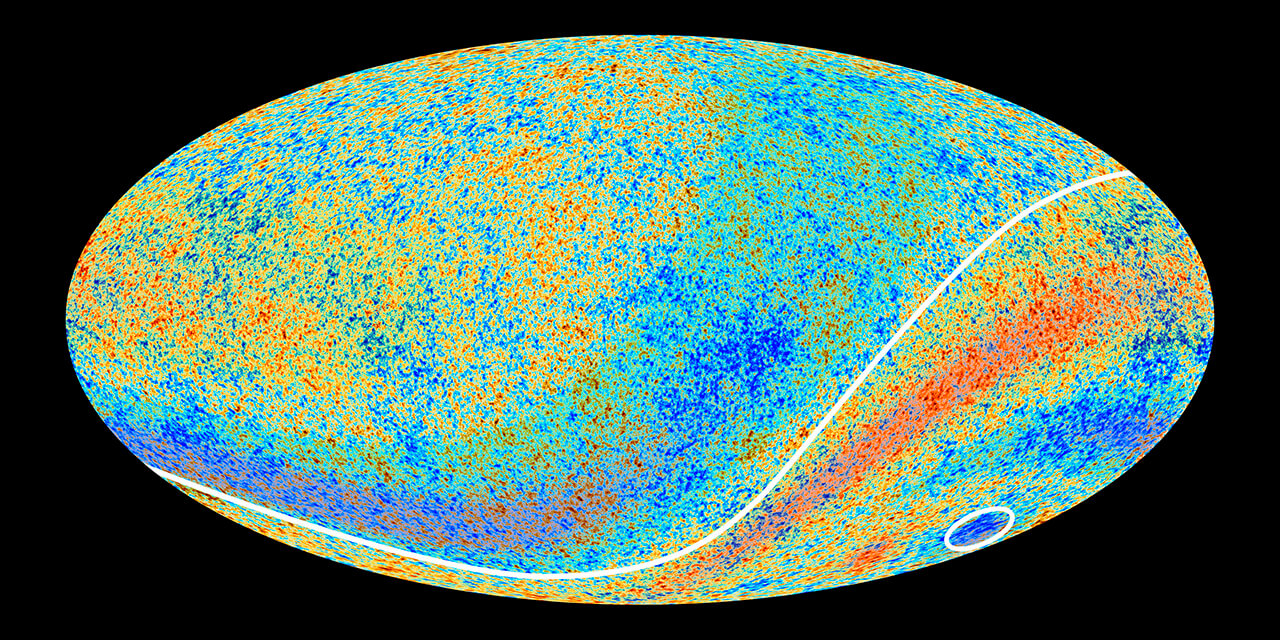The polarization map of the CMB, the most ancient light emitted only 380,000 years after the Big Bang, did not reveal the mysterious cosmic anomalies appearing on the Universe’s thermal radiation map compiled by the European Space Agency’s Planck satellite in 2013.
The results do not exclude the potential significance of the anomalies, but they mean that we will have to dig deeper to understand the origin of these mysterious features.
A few years ago, the data from the Planck telescope allowed us to compile a temperature map of the primary radiation of the Universe, which helped astronomers to further advance their research into the origin and evolution of space. Most of the results confirmed our understanding of these processes, but they also revealed a number of anomalies that are difficult to explain in the framework of the standard cosmology model.
The most serious of these is the“ cold spot ”in the Southern Hemisphere, which is colder than the surrounding areas, as well as other anomalous signs, including the difference in temperature between the two opposite hemispheres of the sky, known even before the Planck measurements. These anomalies may be a hint at the “new physics”, that is, the existence in the Universe of incomprehensible processes, extending the laws known today.
In order to advance the understanding of the anomalies and confirm or deny their existence, the Planck satellite team studied the polarization of the microwave background radiation, which was identified after careful analysis of the data and removing microwave sources in the foreground, including gas and dust in our own Milky Way galaxy.
Polarization provides an almost independent view of the primary light of the Universe, so if anomalies appeared in it, it would increase the astronomers’ confidence that they could be caused by new physics, and not by statistical accidents.
However, no obvious signs of deviations were identified on the map, and, at best, some slight hints of the presence of anomalies were obtained.
Planck’s polarization dimensions are fantastic. Nevertheless, despite the large data we have, we do not see any significant traces of anomalies. At first glance, this makes anomalies possible statistical accidents, but this also does not exclude new physics, because their nature may be more complicated than we imagine.
There is still no convincing hypothesis about what kind of new physics can be the cause of anomalies, since it is possible that the phenomenon responsible for them only affects the temperature of the CMB. From this point of view, although the new analysis does not confirm that a new physics exists, it imposes important limitations on it.
In the future, the mission team plans to conduct an even more thorough analysis of the Planck data, however, in their opinion, it is unlikely that it will yield significantly new results.
The obvious way to achieve progress is a new mission, specially designed and optimized to study the polarization of the primary light of the Universe. But its appearance will have to wait at least 10-15 years.
Anomalies in the thermal radiation of the universe
Click To Tweet
The post Anomalies in the thermal radiation of the universe appeared first on Upcosmos.com.
